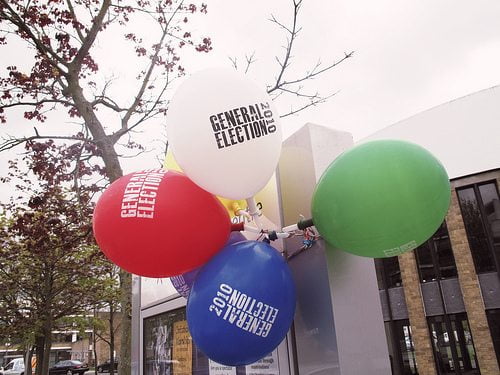

Features
#GE 2015: Those who opposed AV only have themselves to blame for election ‘chaos’
As we draw every closer to the pivotal 2015 general election, David Cameron must be ruing the day he decided to abandon his pledge to Nick Clegg and go all out on the No2AV campaign. While the proposed Alternative Vote mixed system was very far from perfect, it represented a step forward from the disproportional First Past the Post system.
The three systems of election we face are (explanations from Electoral Reform Society):
Current: First Past the Post
Under First Past the Post (FPTP) voting takes place in constituencies that elect a single MP. Voters put a cross in a box next to their favoured candidate and the candidate with the most votes in the constituency wins. All other votes count for nothing. We (the Electoral Reform Society) believe First Past the Post is the very worst system for electing a representative government.
In every election since 1945 (except 2010), the party/ies with a majority of seats in the Commons did not secure a majority of the votes under First Past the Post. There has never been a ‘landslide’ of support for any party. Interestingly, it was the 2010 Coalition which was the first Government since the war that could claim to command more than half the votes cast and more than half of the seats.
2011 Referendum: Alternative Vote
The Alternative Vote (AV) is a preferential system where the voter has the chance to rank the candidates in order of preference.
The voter puts a ‘1’ by their first choice a ‘2’ by their second choice, and so on, until they no longer wish to express any further preferences or run out of candidates.
Candidates are elected outright if they gain more than half of the first preference votes. If not, the candidate who lost (the one with least first preferences) is eliminated and their votes are redistributed according to the second (or next available) preference marked on the ballot paper. This process continues until one candidate has half of the votes and is elected.
It’s worth noting that AV is not proportional representation and in certain electoral conditions, such as landslides, can produce a more disproportional result than First Past the Post.
NB it can still deliver a parliamentary majority without a majority of the vote.
Most proportional: Single Transferable Vote
The Single Transferable Vote (STV) is a form of proportional representation which uses preferential voting in multi-member constituencies.
This video explains what that means.
Candidates don’t need a majority of votes to be elected, just a known ‘quota’, or share of the votes, determined by the size of the electorate and the number of positions to be filled.
Each voter gets one vote, which can transfer from their first-preference to their second-preference, so if your preferred candidate has no chance of being elected or has enough votes already, your vote is transferred to another candidate in accordance with your instructions. STV thus ensures that very few votes are wasted, unlike other systems, especially First Past the Post, where only a small number of votes actually contribute to the result.
To see the results of the 2010 general election under AV click here.
So, why should David Cameron rue the day he opposed AV?
In 2014, polling company YouGov looked at where UKIP gets it support. 45% were from the Conservatives, 15% Lib Dem and 11% Labour.
Crudely, if UKIP supporters marked as their second choice the party they supported in 2010, then the Conservatives share of the vote would rise from 33.7% to 39.7%1, magically lifting them from 280 to 324 seats – just two seats short of a majority (using UKPollingReport’s swing calculator).
It’s clearly more complicated than that (especially with the Scottish dimension), as any psephologist will tell you. But, it’s an important lesson in unforeseen consequences of seemingly rational decisions.
To see the results of the 2010 general election under STV click here.
There still time to find the party whose policies you have the most affinity with. Just click here to take the Vote for Policies survey.
1) 40% is more than the 35% of the vote that secured Blair a 55% Commons seat share in 2005.
Photo: Khairil Zhafri via Flickr
Further reading:
General election: attention given to sustainability in campaigns criticised




















